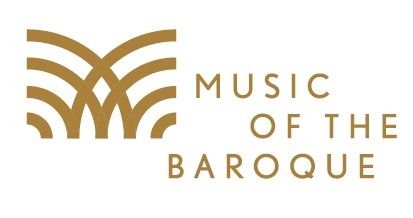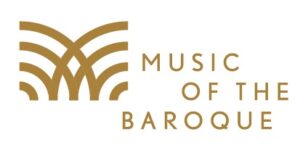
 us). At the same time that Bach documented the errors and omissions which he found in this version of the Bible, he marked notable passages which he planned to use for his Oratorio and made musical annotations.
us). At the same time that Bach documented the errors and omissions which he found in this version of the Bible, he marked notable passages which he planned to use for his Oratorio and made musical annotations.
As for the instrumental performance, the first part (corresponding to the first day) was rich with oboes (Anne Bach, Erica Anderson, and Adèle-Marie Buis), bassoon (William Buchman), and harpsichord (Mark Shuldiner). The Sinfonia interlude that began the second part is famous by its adagio and abundance of strings. The flute solo (Mary Stolper) with cello accompaniment (Ezra Seltzer) during the first aria was supreme as was the flute and oboe quartet (Stolper, Alyce Johnson, Bach, and Anderson) in the chorale portion. And of course, what would Bach’s music be without the heavy and rhythmic bass line throughout? The third day opened with timpani (Douglas Waddell) and built up to full orchestra during the chorus (reprise) section to complete the first half.
After the intermission, the fourth part had the horns (Oto Carrillo and Samuel Hamzem) predominate at the onset. Sumuel, with quite the range, did a great solo baritone during the recitative with chorale section, followed by a very nice duet with Van Doren, as they sang simultaneously in two portions. The oboes plus the bass pizzicato (Collins Trier) precedes the aria, where Van Doren (to oboe accompaniment by Jennet Ingle) was echoed by off-stage soloist and chorus member Rachel Sparrow. In the next aria, presented by a highly energized Bowen, first violins (Gina DiBello, Kathleen Brauer, Kevin Case, Teresa Fream, Michael Shelton, and Gabriela Lara) plus cello (Ezra Selzer, Judy Stone, and Ana Kim), bass (Trier), harpsichord (Shuldiner) and organ (Michael Beattie) did a resplendent job of accompaniment. And the chorale (at the end of this part) opened with horns (Carrillo and Hamzem) as the chorus declared its faithfulness to Jesus.
The fifth part was outstanding with its intricate solo violin by concertmaster DiBello and bass (Trier) just before the trio section and continuing forward with harpsichord and organ Fons, Van Doren, and Bowen alternate lines. Finally, there’s the sixth part with its triumphant opening! Most notable is the tenor’s aria near the end where Bowen takes a pregnant pause (caesura) for emphasis between phrases before the instruments build. This leads up to the recitative, where all four vocalists stand and sing simultaneously, followed by a triumphant closing with its trumpet solo (Tage Larsen), horns, and timpani.
The audience is told at the beginning of the Oratorio to “leave all cares behind” and “banish complaining” before listening to music that will “glorify the name of the Lord.” But as we get further into the sixth day, the libretto becomes a stern message to Bach’s audiences about the existing political situation. In other words, this is not just a piece of religious music. We not only learn the story of the birth of Jesus, the coming of the Magi, and the belief that Christ has come to save the world, but we come to understand something about Christian martyrdom. Since there were no saints or martyrs as yet during the first Christmas, Bach’s composition serves more as an admonishment to his contemporary audience: urging them to stand firm in the beliefs of Protestantism and the political gains of the Protestant Reformation in defending the true Christian faith.
In all, this two-hour and twenty-minute concert was deserving of a big Bravo! I especially enjoyed when Dame Glover specially recognized all of the instrumental and vocal soloists at the end, including Sparrow (from part four) and, of course, chorus director Andrew Megill. What a powerful orchestra and chorus! What great voices! What a stunning masterwork!
Bach’s “Christmas Oratorio” by Music of the Baroque was held on Sunday, November 24th, at 7:30 p.m., at the North Shore Center for the Performing Arts, 9501 N. Skokie Boulevard, in Skokie.
A second performance followed on Monday, November 25th, at 7:30 p.m., at Symphony Center 220 S. Michigan Avenue, in Chicago.
Live performance tickets ranged from $33 to $108.
On Friday, November 29, 2024, on demand performances begin at 5:00 p.m. These are available for the next thirty days. On-demand tickets are $18 plus a $3 handling fee.
For more information about this concert and to purchase on-demand tickets, visit:
https://www.baroque.org/Seasons/2024-2025/.
For more information about future performances of Music of the Baroque, including times, dates, and locations, please go to: https://www.baroque.org/.
Music of the Baroque is a resident company of the North Shore Center for the Performing Arts. To learn more about the venue, their future offerings, and ticket prices, visit: https://northshorecenter.org/.





More Stories
“SOUP’S ON !!!”
“The Elements”, Music of the Baroque reviewed by Julia W. Rath
Bernie G. Yvon Scholarships for 2024-2025